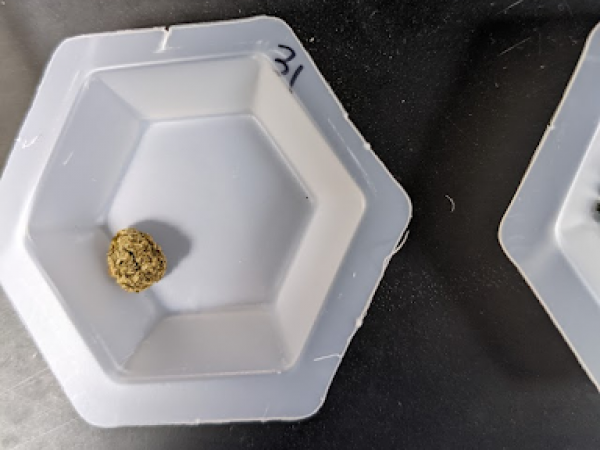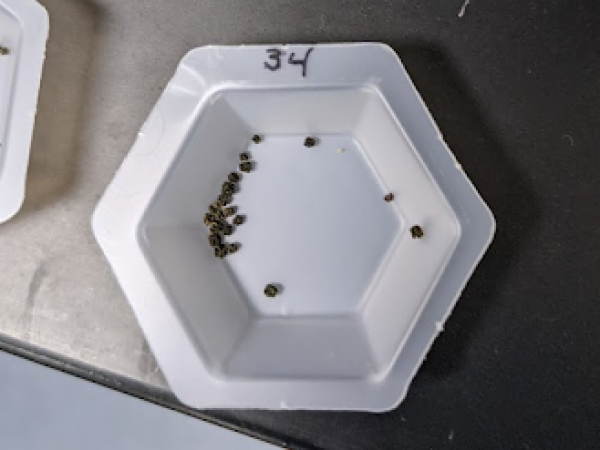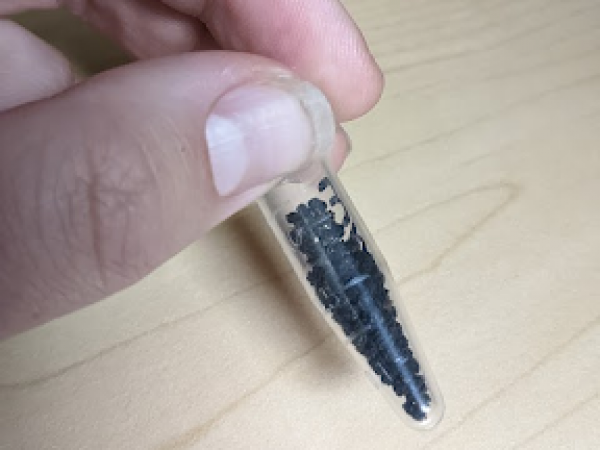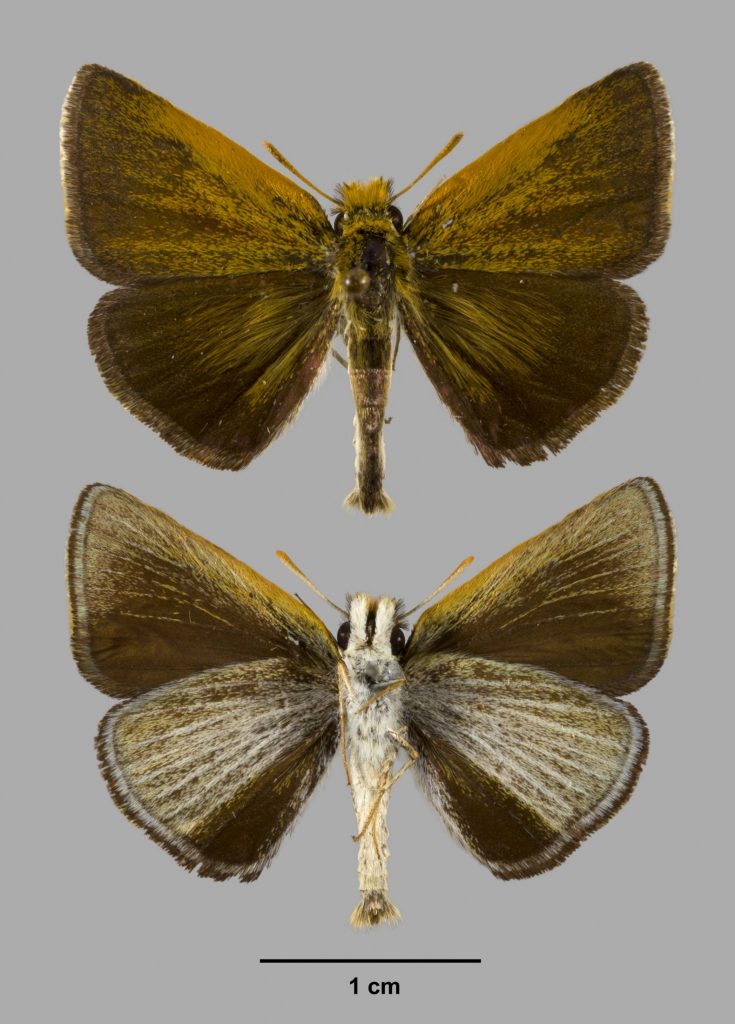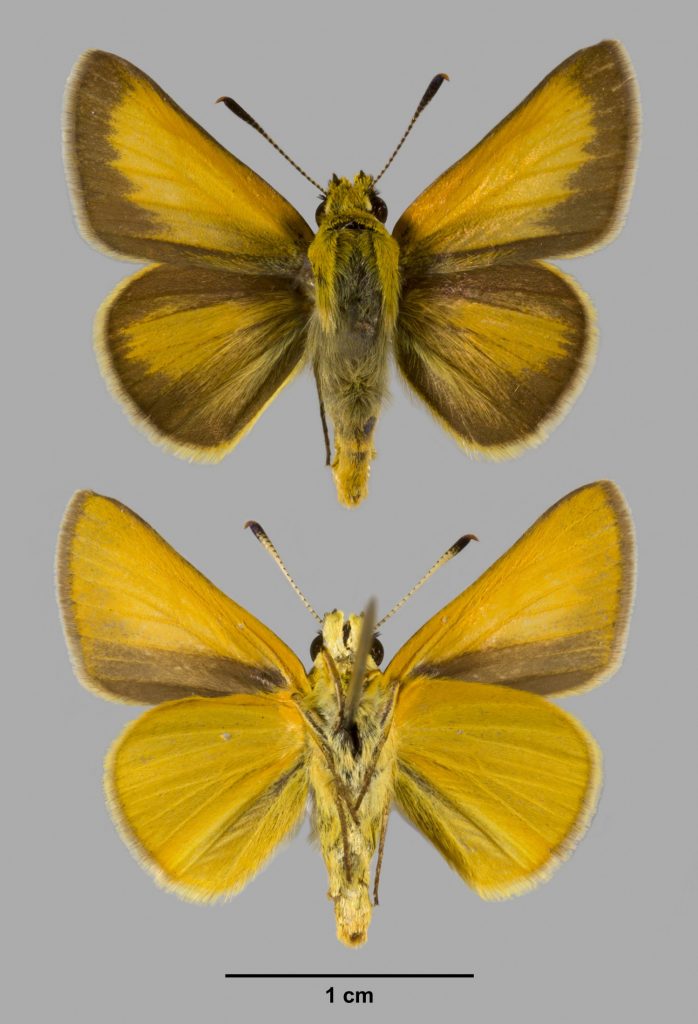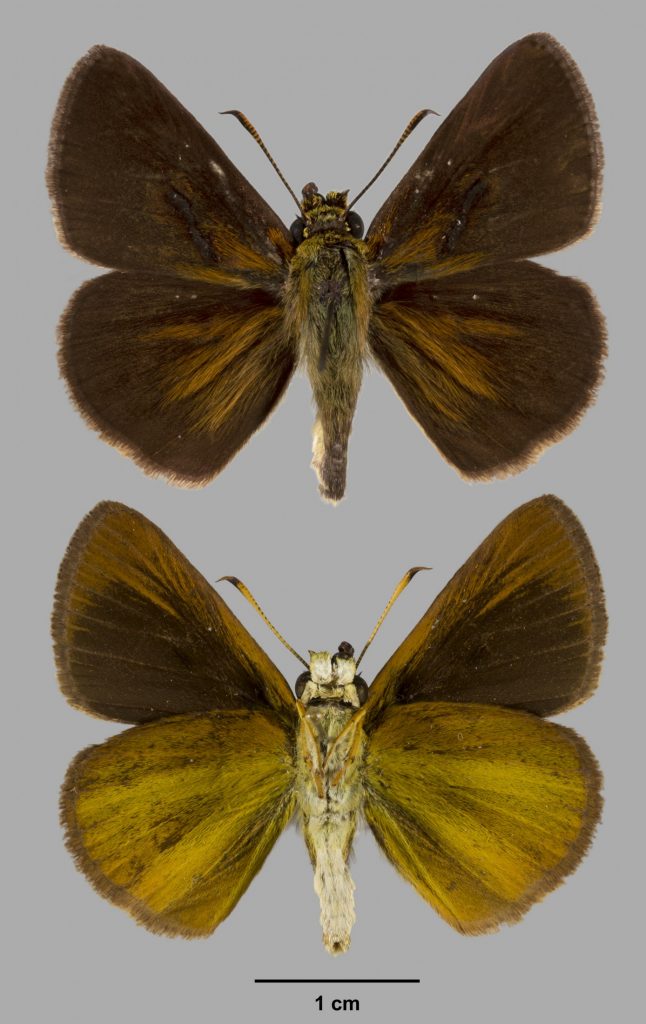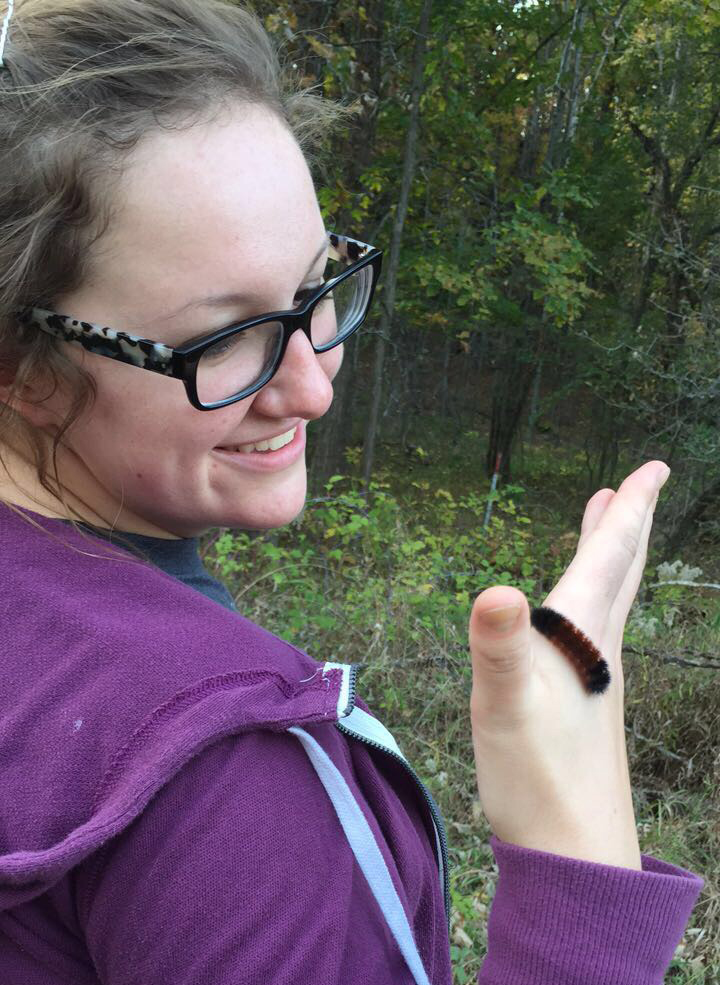
Lillian Hendrick is a fourth-year Ph.D. student in the Biology department at UF, working at the McGuire Center for Lepidoptera and Biodiversity. She is funded through a National Science Foundation Graduate Research Fellowship and a Graduate School Funding Award. Before starting at the University of Florida she completed her B.S. at Central Michigan University, where she discovered her passion for museum collections and conservation by helping with research efforts on the declining Poweshiek Skipperling (Oarisma poweshiek). Now, at the University of Florida, she focuses on lepidopteran conservation genetics, obtaining DNA samples from specimens through non-destructive means as well as collecting DNA in a particularly unique way which does not harm live insects.
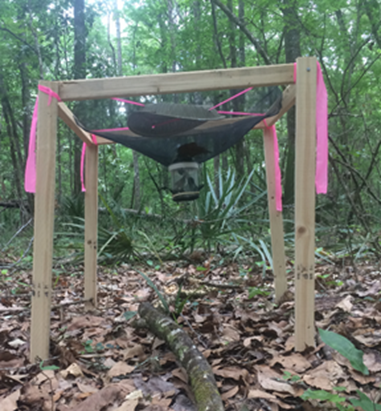
Here’s the poop scoop — Lillian collects frass, a.k.a. caterpillar poop to assess species richness, or what species are found in a given community, in urban, suburban, and rural areas. This is a joint effort with Michael Belitz under their co-Advisor, Robert Guralnick. Frass is extremely abundant, especially in subtropical and tropical climates, often falling from the tree canopies like rain, as caterpillars eat, grow…and poop. Past studies have shown that it is possible to obtain DNA from frass, making it a viable option for environmental DNA, or DNA obtained from the environment instead of directly from an organism.
For her part of the project, Lillian is using this environmental DNA to identify which species are found at several study sites by analyzing DNA from frass collected under oak tree canopies, through a process called metabarcoding. Large frass traps are set up at each site which funnel the falling pellets into a collection container. The samples are then sorted to remove debris and then extractions are done on subsamples which may contain many different species. Standard primers (or templates) for certain sections of DNA present in many groups of insects are used to replicate DNA through a process known as PCR (Polymerase Chain Reaction). Short sections of DNA found within the samples can then be compared to DNA libraries to identify all the species represented in the sample.
Caterpillar frass comes in various shapes and sizes depending on the species and increases in size with each instar. While it is possible to recognize a few larger species by just looking at the poop, metabarcoding gives the whole picture and a few surprises too. In addition to caterpillars, DNA barcoding has detected droppings from other insects like katydids, and even mice! Lillian hopes her research will show how lepidopteran community composition changes across different levels of urbanization and how urbanization impacts larval communities in a subtropical environment like Florida.
Additionally, Lillian is working on population genetics of the Arogos Skipper (Atrytone arogos) and Duke’s Skipper (Euphyes dukesi calhouni) with her co-advisor, Jaret Daniels. These skippers are declining both within Florida and across their current ranges. These projects will use the DNA obtained from a single leg collected from wild butterflies to help to assess their genetic health, by showing how much genetic diversity they have within a population and across populations, suggesting if they are inbred, making them more prone to diseases and stochastic events that could result in greater species decline. The results from this study can be used to inform these species’ future conservation statuses, which could lead to policy and action to help protect them.
When not working on research, Lillian loves spending time with animals, often fostering and trapping stray cats, or just spending the day with her own rescue pets. She also loves drawing and painting, especially the butterflies and plants she observes outside while walking around Gainesville’s parks and trails with her dog, Bug.
